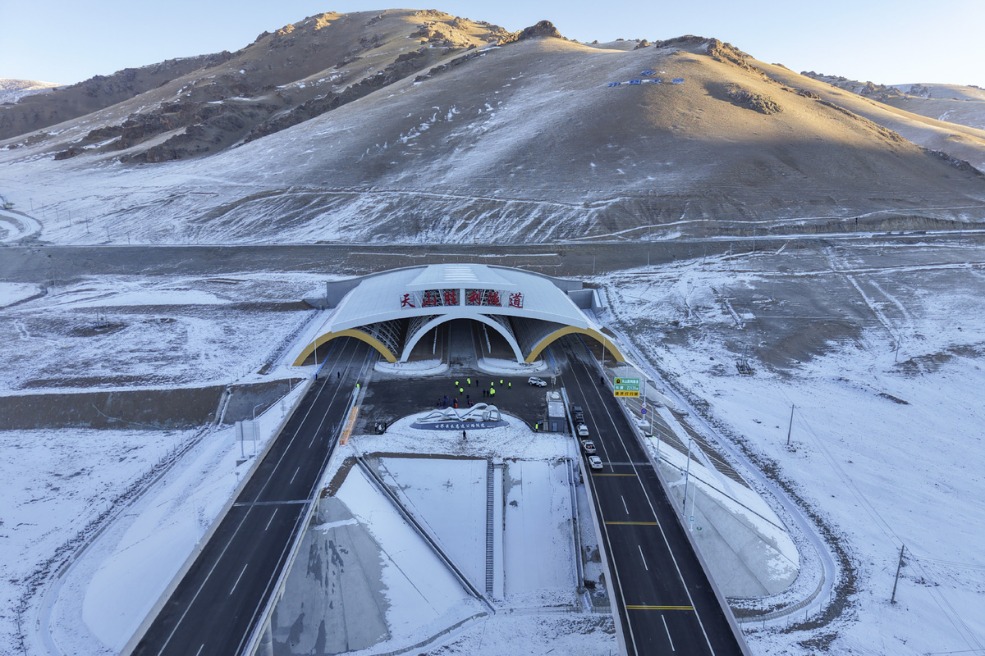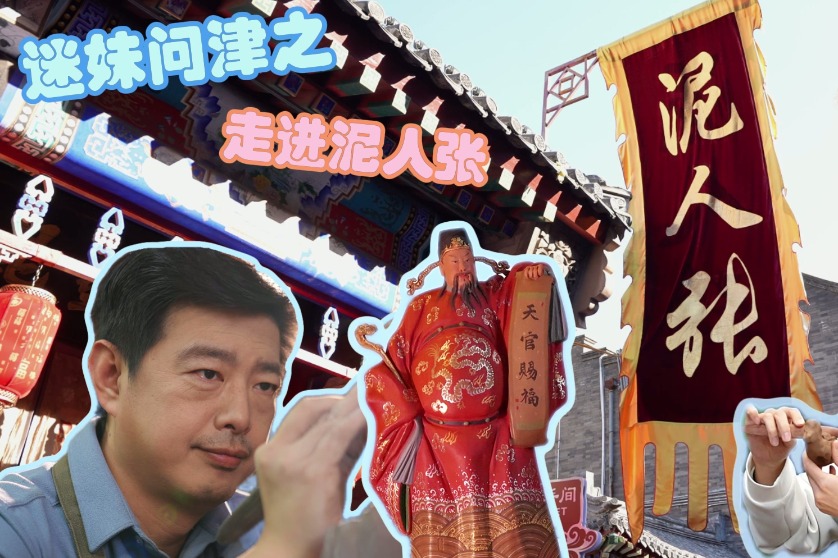Frozen in time
Anniversary exhibition celebrates Song Buyun, an artist who reveled in capturing the spirit of old Beijing and its people, Lin Qi reports.

These days, a long-awaited snowfall in Beijing easily creates a fanfare online. One need not to go outside to feel people's excitement at a blanket of snow descending on the city, as a glimpse of the photos and videos uploaded on social media will suffice.
Seventy years ago, however, unlike now, while snow was not uncommon in the capital, cameras were a rarity; few were able to record the historical city's tranquil scenery. One of the few was Song Buyun, the late oil painter and watercolorist who walked the streets and captured on canvas the beauty of the capital's centuries-old architecture.
In the late 1940s and throughout the '50s, Song worked at the Central Academy of Fine Arts and then ministry of culture (now Ministry of Culture and Tourism). In his spare time, he traveled around Beijing and its suburbs, and depicted, in numerous oil works, the varying landscapes and people's life at the time.
Song's 70-year-old collection of Beijing scenery is at the center of A Broad-minded Man Between Clouds and Waters, an exhibition to mark the 110th anniversary of Song's birth currently running at the art museum of the Central Academy of Fine Arts. The exhibition will run through Dec 27.
Cultural landmarks frozen in time are displayed in Song's Beijing landscape series, picturing the serene atmosphere of the city's historical spots over the course of a year, such as Tiantan or the Temple of Heaven, Shichahai and the Ancient Observatory. He documented the peaceful life of people in the city and included parades on Chang'an Avenue to celebrate the founding of the People's Republic of China, visiting the Palace Museum, swimming in lakes and clearing snow off the streets.
Song, who died in 1992, didn't have a chance to show this body of work during his lifetime. It was not until 2000 that these paintings made their public debut at an exhibition held in his memory.
Fan Di'an, dean of the Central Academy of Fine Arts, says: "Song's works preserve the multifaceted landscape of a city, old and new, and underneath his figurative brushwork, Song injected rich emotions, allowing his work to stand the test of time."
Xu Beihong the eminent artist, and a close friend of Song's, is said to be the one who suggested Song paint Beijing's historical architecture.
"Song's paintings show the harmony between architecture and its surroundings,"Fan says. "The colors are vivid and arranged tastefully to give a refreshing look to these old buildings."
Trained in China and Japan, Song inherited from impressionists a sensitivity to color and the contrast between light and shadow. Beside oil painting, he also worked with watercolor and classical Chinese painting, and in them he presented delightful luminosity, performing with a symphony of colors.
The exhibition also shows a dozen classical Chinese ink paintings, marking Song's resurgence in the late 1970s and throughout the '80s.
Some are mountain-and-water genre paintings, created during his travels from northern to southern China. Others are the paintings of peaches and grapes for which Song is best known, in which he blended the techniques of Chinese and Western art to render the fruits with a fine texture.
Song once said, "When I paint, I feel like I'm free from any set rules."
Yu Yang the exhibition curator says that, in his later years, Song left two verses in many paintings, which read:"Surviving the summer storms, and defying the bitter cold, a tree yields fruits with an exceptionally sweet taste."
"The verses imply the vicissitudes Song experienced, and the pine trees, rivers and lakes in his works indicate a pursuit of high morality he lived up to," Yu explains.
Fan says Song's art shows the attitude of an honest, open-minded scholar-artist that will inspire not just the audience of today, but those of the future as well.



Today's Top News
- China OKs three action plans to build pilot zones for a Beautiful China
- CPC leadership meeting stresses steadfast implementation of eight-point decision on improving conduct
- China launches steps against US defense firms, individuals
- Militarism revival efforts criticized
- Leadership highlights Party conduct
- Forging a human-centered future in era of smart machines






























